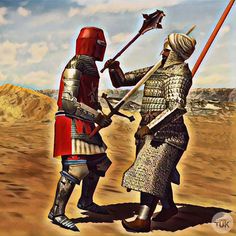
Simhana II
Coins
Simhana II, who ruled the Seuna Yadava Dynasty from around 1210 to 1247 CE, was a significant figure in the latter phase of the Yadava Empire. His reign is remembered for his efforts to consolidate and strengthen the Yadava kingdom amidst growing external threats and internal challenges. Simhana II's military campaigns were crucial in defending the Yadava territories from the expanding Delhi Sultanate and other regional rivals. His strategic acumen was evident in his efforts to fortify the kingdom's defenses and maintain its territorial integrity. Despite facing continuous pressure from external forces, Simhana II managed to sustain the kingdom's stability during his tenure. Culturally, Simhana II was a patron of the arts and architecture, continuing the Yadava tradition of supporting literary and artistic endeavors. His reign saw ongoing contributions to the cultural and architectural heritage of the Yadava period, including temple constructions and the promotion of local art. Simhana II's reign marked a period of resilience for the Yadava Dynasty. However, despite his efforts, the dynasty faced increasing pressure from the Delhi Sultanate, which ultimately led to the fall of the Yadava capital, Devagiri, in 1318 CE. Simhana II’s rule remains a testament to the challenges faced by medieval Indian rulers in maintaining their empires amidst shifting power dynamics.

Rama Deva
Coins
Rama Chandra Deva, also known as Rama Deva, was the last significant ruler of the Seuna Yadava Dynasty, reigning from around 1271 to 1318 CE. His rule is noted for its challenges amidst a turbulent period in medieval Indian history. As the Yadava Empire faced increasing pressures from the expanding Delhi Sultanate under Sultan Muhammad bin Tughlaq, Rama Chandra Deva worked diligently to defend his kingdom. During his reign, Rama Chandra Deva grappled with numerous military confrontations. Despite his strategic efforts to fortify the kingdom and manage its internal affairs, the Yadava Dynasty struggled against the Sultanate's relentless invasions. His administration attempted to consolidate and strengthen the empire’s governance, but these efforts were often undermined by external aggressions and internal dissent. The most defining event of his reign was the fall of the Yadava capital, Devagiri (Daulatabad), in 1318 CE, to the forces of the Delhi Sultanate. This conquest marked the end of Yadava rule and the integration of their territory into the Sultanate's expanding domain. Rama Chandra Deva’s reign, characterized by resilience in the face of overwhelming odds, reflects the broader decline of regional powers during this period. His efforts to sustain the Yadava Empire highlight the difficulties faced by medieval Indian rulers in maintaining their realms amid rising regional and imperial challenges.

Bhoja Deva
Coins
Bhoja Deva was a prominent ruler of the Yadava Kingdom, reigning in the late 11th century. He is best known for his contributions to the cultural and political landscape of the kingdom, particularly during its peak under the Yadava dynasty. Bhoja Deva focused on expanding the kingdom’s territories and strengthening its military and administrative structures. His reign is marked by the promotion of arts and literature, leading to a flourishing of cultural activities. He is often associated with the patronage of poets and scholars, contributing to the rich literary heritage of the period.
